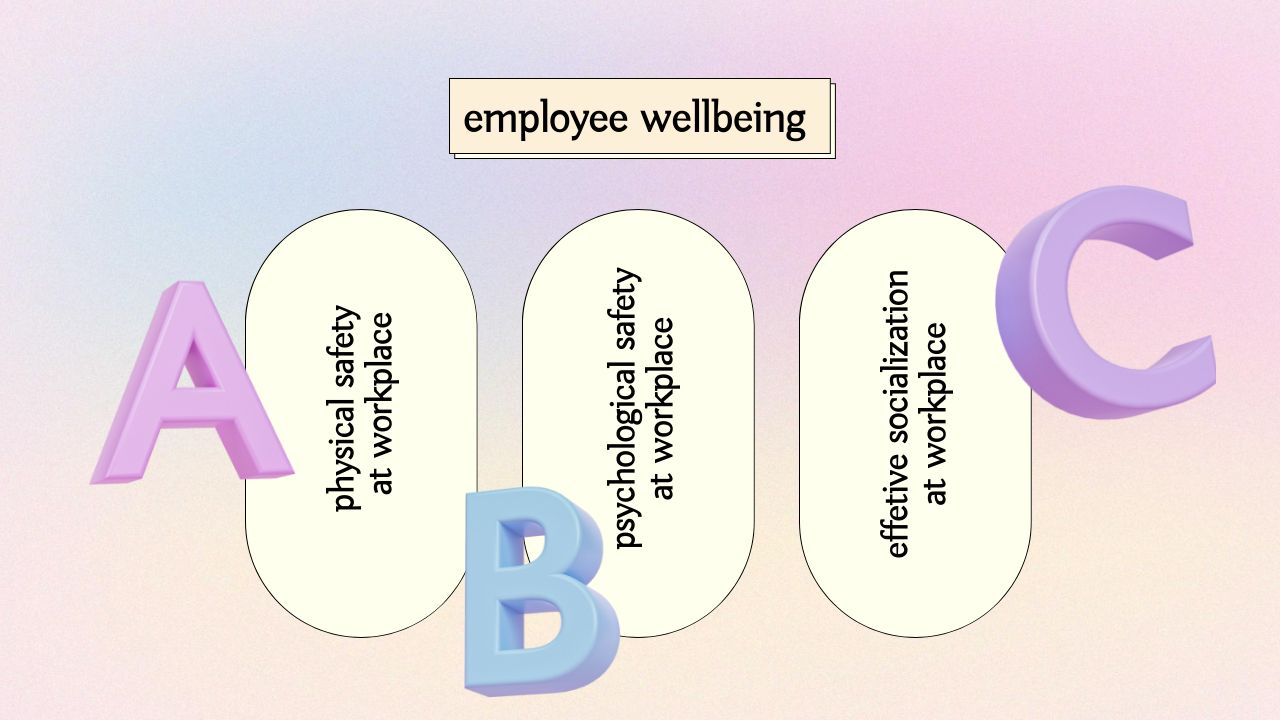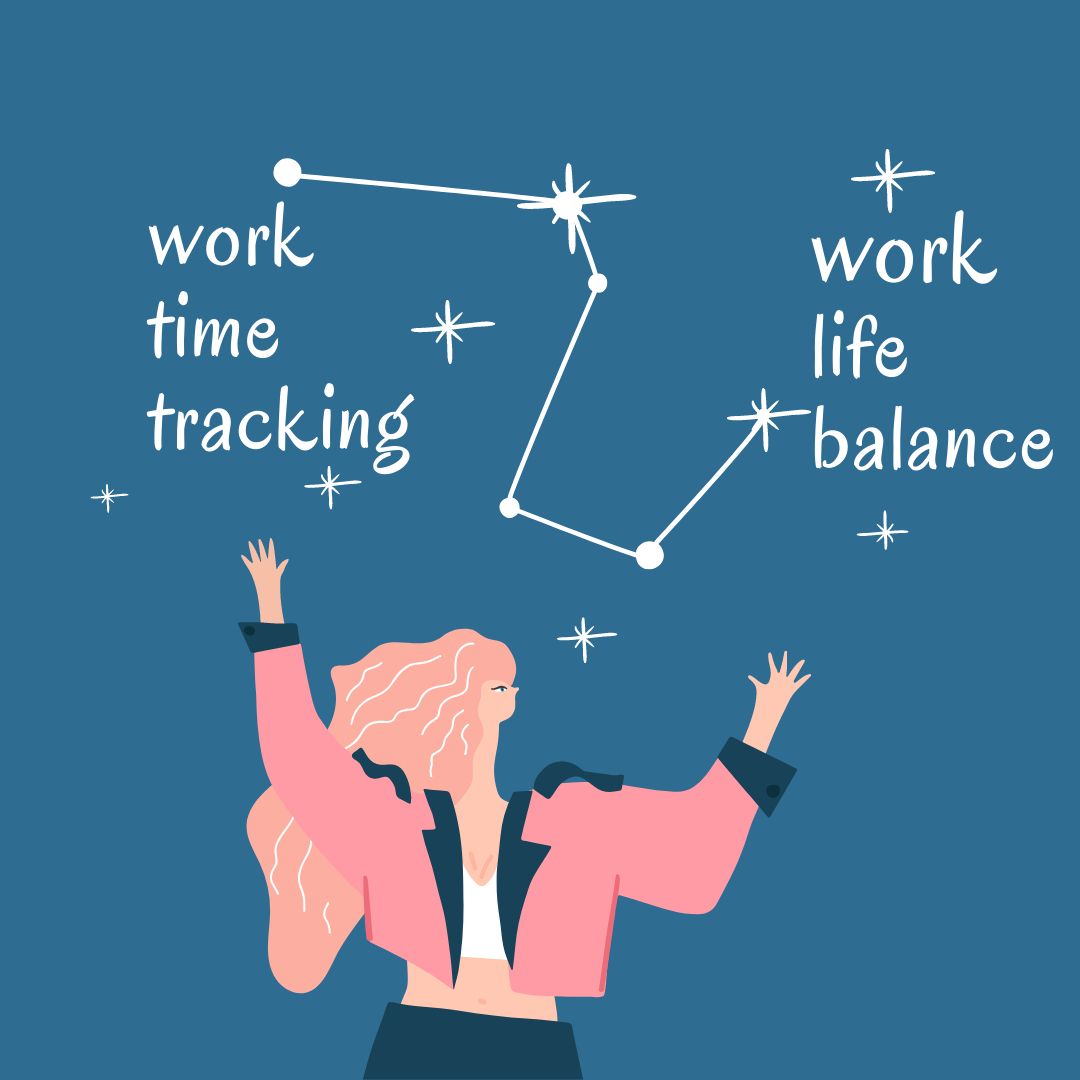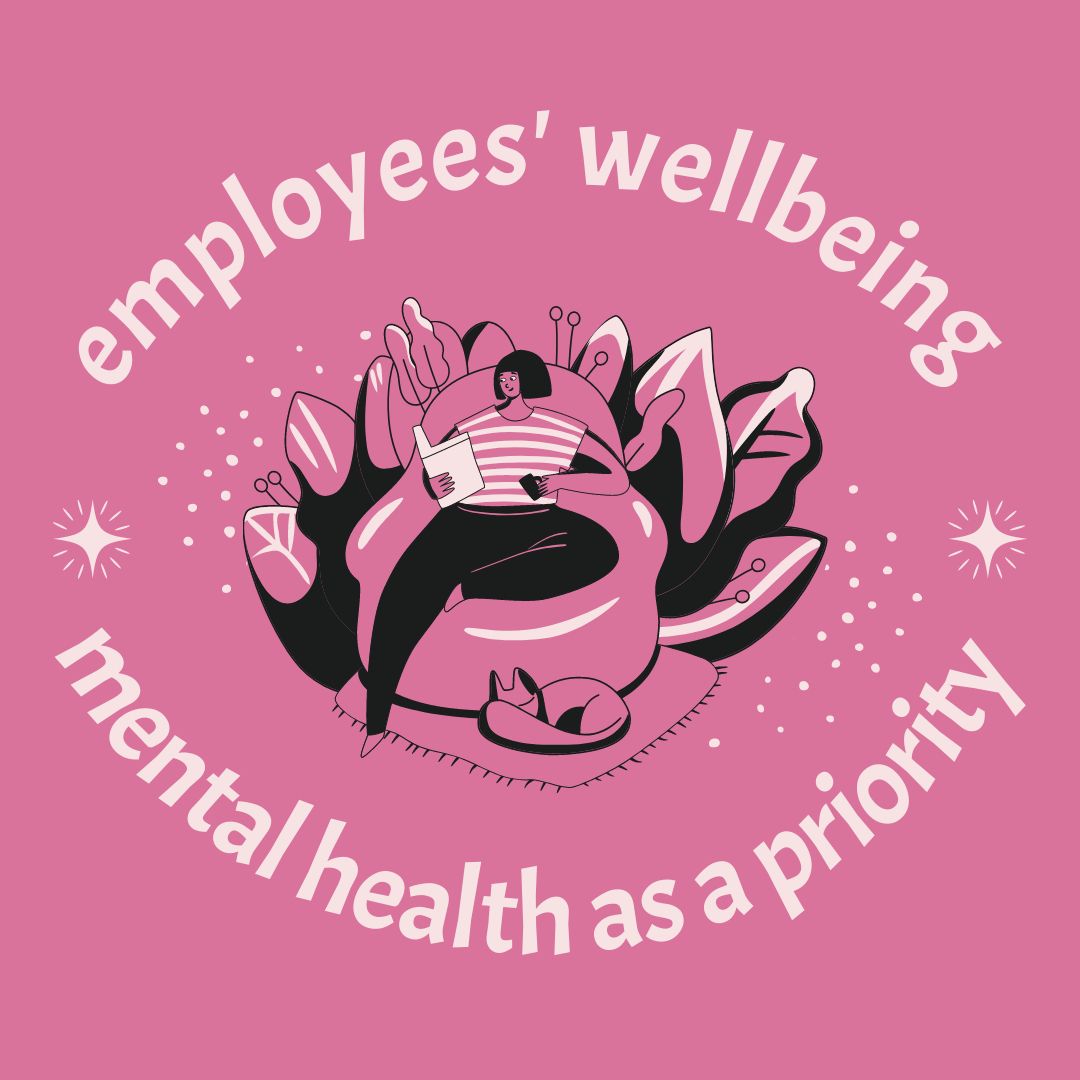How To Improve Employee Productivity With These Top 5 Wellbeing Initiatives
Workplace wellbeing initiatives are important for your employees and your business. Tried and tested ways to improve the wellbeing of your staff can be found in this guide.

Every day we see more and more people searching for ways to remove themselves from the old concept of work. Is this in protest or to defend themselves in the absence of a protected workplace?
What is employee wellbeing?
Work is changing. Organizations are facing an exodus of workers who are exhausted and overwhelmed.

The skills needed to be successful in the 21st-century workplace are transforming rapidly. Knowledge workers are more than often not interested in jobs for jobs' sake. They want work to give them a sense of security in terms of health and purpose.
According to conclusions drawn from recent surveys:
Workers’ needs for health and well-being support are... more visible to employers than ever.
Contrary to conventional wisdom, the most motivating answer is rarely just to be paid more though pay rise is among the top employee expectations of 2022 .
Amid concerns over employee burnout, employers can offer more positive and fulfilling experiences at work as they prove to result in:
- elevating individual and company performance
- decreasing employee turnover
- improving business outcomes.
One of the keys to achieving these goals along with attracting and retaining talent can be found in the domain of employee wellbeing.
Global Wellness Institute defines wellness as 'the active pursuit of activities, choices, and lifestyles that lead to a state of holistic health'.
Thus, employee wellness implies a wide range of questions from staying physically safe at work to feeling engaged and motivated when performing assigned tasks.
Why are workplace wellbeing initiatives important?
For years, executives have experimented with different metrics, such as employee satisfaction or engagement, to understand their employees. In 2022, organizations will add new measures that assess their mental, physical, and financial health.
It's confirmed by the fact that many companies expanded the wellness support they provided to their employees in the wake of the pandemic.
Furthemore, Workday Employee Wellbeing survey found that businesses in the US make significant investments (with the annual employee wellbeing budgets of over $ 1000000) in increasing support for employee financial, physical, and mental health benefits, which enabled their workforce to report:
- higher levels of mental health
- higher levels of physical health
- efficient sleep management.
These improvements in personal outcomes translate to soaring levels of performance and retention. However, there has been limited uptake of wellbeing programs by employees.
In this guide, we'll explore workplace wellbeing initiatives and workplace wellbeing ideas, that employers can implement to improve the situation.
We will also outline the elements that make up an effective workplace wellbeing initiative, especially employee wellbeing initiatives during a lockdown and provide some great examples on how to improve employee wellbeing during COVID to inspire you.
Bottom Line: Workplace wellbeing initiatives are important for your employees and your business. Here are just some of the reasons why:
- providing means of stress management helps to reduce sickness absence and improve staff retention rates
- assisting employees in staying healthy and promoting a healthier workforce can increase productivity and profitability
- organizations that demonstrate a commitment to employee wellbeing attract the best people.

Main aspects of employee wellbeing
The return on investment offered by workplace wellbeing initiatives speaks for itself. For every dollar invested in health promotion and disease prevention, organizations can expect to save considerably in reduced sickness absence, staff turnover, and presenteeism.
Main aspects of employee wellbeing include:
- physical safety (businesses must conform to basic norms that provide employees' physical and environmental comfort)
- psychological safety (being in an environment that encourages emotional stability and promotes employees' mental wellbeing)
- a positive experience of professional and personal socialization.

It explains why wellbeing initiatives are becoming increasingly popular in today's workplaces. Employers are beginning to realize that investing in the wellbeing of their employees can create a happier and healthier workforce, especially with developing wellbeing programs that would be directed at addressing aspects listed above as part of business strategic planning.
Employees who are well-rested, emotionally balanced, and physically active perform better than employees who are not. Organizations that adopt new employee wellbeing measures while taking into account all three aspects of employee wellbeing will be able to predict an employee's performance more accurately.
On watch for wellbeing challenges
In light of the pandemic-caused pandemic, employee wellbeing initiatives are essential for workplaces globally to remain competitive and productive.
Despite large numbers of employers recognizing the benefits of wellbeing programs, many have failed to introduce them.
Hence, prior to understanding how to improve employee health and wellbeing, business owners and HR managers should consider some practical steps.
First of all, employee wellbeing must be incorporated in the business strategy plan and highlight a multitude of aspects (health, socialization, etc.) to be achieved for each initiative.
Additionally, if the HR Departments aim at implementing effective wellbeing initiatives, they must regard probable challenges.
The usual suspects: Mostly, mismanagement is what challenges employee wellbeing initiatives. Besides, remaking and amplifying corporate culture under the ongoing pandemic is complicated.
Aside from uncoordinated efforts of executives and HR, employee wellbeing initiatives can be undermined on technological and corporate levels:
- poor choice of assisting software
- lack of flexibility in business and workforce management policies
- the discrepancy between the proclaimed values and actual work routine.
The implication is that many companies are spending lots of money on recruiting new employees without looking after their existing workforce.
When drafting a wellbeing program, first consider what makes your business unique. Then use that information to help you focus on the needs of your specific group of employees and their needs.
After all, programs are created with the purpose of helping people live productive lives; if they aren't relevant, they aren't likely to be successful.
Top 5 Employee Wellbeing Initiatives
Automatic time tracking tops HR wellbeing initiatives

One of the best ways to improve employee wellbeing at work is with time tracking software. It keeps track of how long employees spend on assigned tasks along with tracking PTO.
Too many tasks on a daily to-do list are potential land mines causing destruction and procrastination. A time tracking app can help you manage your working hours effectively.
If someone has been working long hours over several days, managers can speak with them about their workload and find ways to lighten it. If someone is taking a lot of sick days, on the other hand, you can analyze possible causes and work out a plan to reduce absences.
Employers striving for the implementation of effective wellbeing initiatives can expect to see these benefits with time tracking:
Healthy work environment – Time tracking enables workers to become more aware of how they're spending their workdays, how much time they're spending on productive versus unproductive activities, and eliminate any friction in creating a smooth workflow. When workers gain a better understanding of the balance between what they're doing at work and how they can manage their time off, they feel happier about their jobs.
Reduced stress – This benefit comes from the same awareness as the one above. When you know where your time is going, you can take steps to reduce stress by making adjustments to your workflow or by eliminating unnecessary tasks that are eating up your time without contributing much value to your organization's bottom line.
Easier collaboration and cooperation – Syncing time tracking data with other organizational tools makes it easier for team members across departments to collaborate on projects. It also makes it easier for teams to share their progress towards goals with each other.
The whole new world with fitness wellbeing initiatives🏅🤾🏻♂️🏂🏻

When asking how to improve employee health and wellbeing, successful HR departments focus on the word 'fitness'. Workplace fitness programs can include everything from free gym memberships to dietician consultations.
These types of programs emphasize improving health through exercise, which has been shown to increase energy levels and decrease stress.
Fitness initiatives for improving workforce wellbeing can help employees:
- Manage stress, anxiety and depression
- Improve physical activity levels
- Lose weight or quit smoking
- Deal with back pain or other musculoskeletal conditions
- Reduce reliance on alcohol and illicit drugs.
A good software system that motivates employees to get on their feet and move throughout the day (break time reminders, fitness trackers, etc.) will save you money on sick days and increase productivity for your business.
Give nutrition programs a green light when implementing wellbeing initiatives 🍇🍉🍊
Pandemic made a negative impact on our bodies. Nutrition programs prove to be among the most effective wellbeing initiatives. These are designed to educate employees about making healthy food choices.
In many instances, dieticians are employed or consulting firms contracted to help employees make smarter food decisions as well as offer vitamins and supplements for maintaining a healthier diet.
Besides, many companies offer weight loss programs as part of their overall wellness initiatives. Such programs typically provide education not only on proper nutrition and exercise but help be on alert when it comes to dangers of obesity by providing services of personal coaches who monitor progress in achieving optimal weight.
Amid heightened health awareness, taking a systematic approach (for instance, building effective feedback mechanisms, providing employees with comprehensive resources such as wellbeing calendar, etc.) pays off with the improvement of employee wellbeing and business health overall.
Be the change with mental wellbeing initiatives 🧘🏻♂️🥰

According to Gartner report, disruptions caused by the pandemic made employee health a top HR trend of 2022. Finding out where your employees need the most help is more important now than ever.
To prioritize mental wellbeing, employers can start with mental health first aid training for employees, as well as reducing the stigma associated with stress and mental health.
By active involvement of HR managers in wellbeing management, emerging mental health issues can be identified early, when interventions have the greatest impact. Besides, businesses can utilize:
- meditation apps
- telehealth services
- sleep management apps
- on-site and virtual mental health workshops.
Pet-friendly and efficient 🐕🐩🐕🦺

Making your office pet-friendly is one of the best corporate wellbeing initiatives for better stress management in the conditions of hybrid work. Besides, pet owners looking after animals' wellbeing do not need extra encouragement in taking the questions of health and productive routine seriously.
Such a tweak in office policies can lead to fewer days lost due to absence, reduced staff turnover, and increased productivity.
Finance wellbeing initiatives as a part of support for employee wellness 💲💰🌟
Engagement is a key predictor of performance and the bottom line, and companies that want to maximize both should take a good hard look at what they can do to make their people happier and more productive.
The health of our workforce matters – it is also important for business performance and productivity. To reduce the burden of the pandemic and help employees who are affected, there are time-tested financial wellbeing initiatives that work equally well in remote and hybrid work:
- insurance plans
- discounts for business services
- compensations (for investment into ergonomic equipment, glasses for reducing eye strain, etc.)
- employee referral programs
- payments for education and ongoing professional training
- assistance and coaching in financial planning.
It is also important to update financial support policies frequently because now, getting in touch with employees in order to learn about their needs is more vital than ever.
Bottom Line: The new generation of employees and employers are both health-conscious. They value the opportunity to participate in wellbeing programs. And what's more, they are becoming more aware that wellbeing programs at work can make a real difference to their own health and the health of the organization.
Takeaways
- Employees' wellbeing makes a difference to any business's bottom line. The term "wellbeing" is often used interchangeably with "work-life balance", but it encompasses much more than just having a life outside of work.
- The pandemic made businesses reevaluate the perks and benefits they offer to employees and concentrate on prioritizing work-life balance and employee mental health.
- Employees are often clocking in and out of work without anyone knowing how they're feeling, and workplace wellbeing programs can make all the difference.
- Yet despite the clear business benefits, many organizations nationwide still neglect to implement workplace wellbeing initiatives. Among many barriers to implementing such initiatives, a lack of understanding about how to create an effective wellness program is one of the most common.
- A wellbeing program if introduced through the initiatives we listed above proves to be a great way to improve employee health and productivity. It can also help you be a better employer by offering additional support to your staff.
- Wellness becomes the newest metric that companies use to understand their employees. Organizations will start focusing on employee well-being in 2022, designing their strategies to prioritize the health of employees by offering assisting software and employee wellness programs for improved performance and retention.
If you're an employer, find out what your employees need most and play the game when it comes to implementing the top 5 wellbeing initiatives listed above to be well-prepared in 2022.

